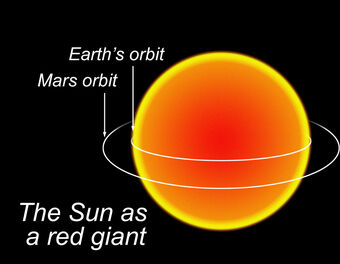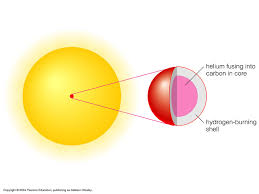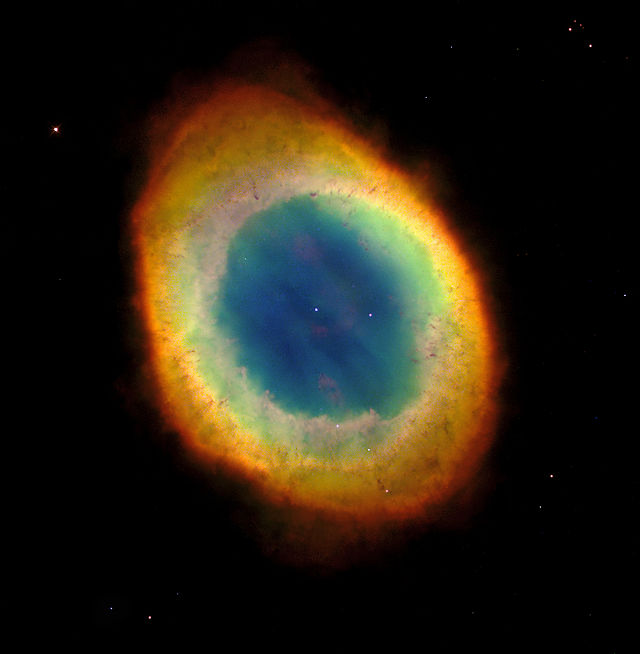70 Falmouth Street Portland, Maine 04103
43.6667° N 70.2667° W
Altitude: 10 feet below sea level
Founded January 1970
Julian Date: 2458982.16
2019-2020: CXLV
THE DAILY ASTRONOMER
Tuesday, May 12, 2020
Remote Planetarium 32: A Sun's Life II: Life and Luminosity
LUMINOSITY
Luminosity measures the amount of energy a star produces every second. The Sun's luminosity is about 3,830,000,000,000,000,000,000,000 Watts. If we could harness the Sun's energy output over one second, we could power human society at its current level for 650,000 years! We must discuss luminosity before we can speak about the Sun's life cycle. Our focus will be on how a star's temperature and size affect luminosity. We will defer the all important mass-luminosity relation until another day.
Temperature.
Let's imagine that I am standing in front of you with a garden hose, a fire hose and a riot control water cannon. I will set one of them on you and you must choose which one you would prefer. What do you say? Well, unless this unseasonably cold weather that we've been experiencing well into May, Mr. Gore, has depressed you beyond all consolation, you will likely choose the garden hose. Why? You know that while the garden hose will moisten and therefore annoy you, the fire hose and water cannon could injure you severely. What's the difference? Water pressure. Pressure determines the force of the expelled water.
What determines a star's radiant emission? Well, yes, all you need do is look at the title of this section to answer that question. Temperature is related directly to radiant flux, the amount of radiant energy produced per unit over a given area of a star (also at a specific wavelength, which we will also ignore, at least for today.) Radiant flux is proportional to the fourth power of the temperature. If, for instance, a star's temperature doubles, the radiant flux will increase 2 x 2 x 2 x 2 = 16 times. The radiant flux is very temperature sensitive. The previous relation is just a proportionality. In order to know the actual radiant flux for a given temperature, we need to introduce a "constant of proportionality."
______________________________________________
Explaining constants of proportionality.
Now, instead of standing before you with hoses and water cannons, I've decided instead to give you a bag of coins. Here we have established a proportionality: the amount of money you receive will be proportional to the number of coins I give you. The greater the coin number, the greater your income. However, this information alone does not tell you how much money you will actually receive. To know this value we have to introduce a "constant of proportionality," in other words the coin's value. You'll have more money if you receive a hundred quarters instead of a hundred pennies. The constant of proportionality converts a proportionality to an equality.
_______________________________________________
The Stefan Boltzmann constant
specifies the amount of radiant energy produced as a function of time and temperature.
Now that we've established a relationship between radiant flux and temperature, we need to next relate it to luminosity, the entire star's energy output. Since radiant flux measures the energy emission from a unit area, we can calculate the radiant emission along the entire star by multiplying the flux by the star's surface area.
The Sun is almost a perfect sphere. (As the Sun is only 0.0007% away from perfect sphericity, we can safely consider it spherical.) A sphere's surface area equals 4 times pi times the square of its radius. (Pi is the ratio of a circle's circumference to its diameter and approximately equals 3.14159) Combining the flux and area we derive the luminosity equation:
The Sun's luminosity relates directly to the square of its radius and the fourth power of its effective temperature. We will not use the term "surface temperature" because a star lacks any solid surface.
A SUN'S LIFE
As we learned yesterday our Sun coalesced from a gaseous nebula approximately five billion years ago. The Sun became an active star once the hydrogen-burning commenced within its core. This "burning" is actually a complex fusion process by which hydrogen nuclei fuse to produce helium. Initially, the Sun was much less luminous that it is today. The chart below relates the Sun's luminosity with time:
About 1.5 billion years ago the Sun was about 80% as luminous as it is today and has been gradually increasing. That the young and warm Earth revolved around a cooler Sun puzzled astronomers greatly and led to the "Faint Sun Paradox." Read more about this paradox and its possible solution below. The main lesson resumes after this section's conclusion.
_____________________________________________________________________________________
FAINT YOUNG SUN PARADOX
Earth's geological record tells us that liquid water covered most of our home planet billions of years ago much as it does now. It also indicates that life began a few billion years ago within these very waters. This record includes sedimentary rocks that still bear the imprint of fossilized algae and other traces of primordial life. Stellar evolution indicates that the Sun was much cooler during its youth than it is today. The Sun's luminosity, or energy output, slowly increases with time as helium "ash" generated by hydrogen fusion reactions accumulates in its core. This helium intensifies core temperatures and impels the hydrogen-burning core to expand. Consequently, the Sun will be much hotter in the future, just as it was cooler 3-4 billion years ago. Specifically, when life was first gaining a foothold in Earth's oceans, the Sun should have been about 25% less luminous than it is today. The relationship between solar luminosity and Earth's surface temperature is a tangled mess, so Earth's temperature would have only been 7% lower than today's average value.
Therein lies the problem, because this temperature reduction should have made Earth a global ice box, with glaciations extending from pole to pole. Yet, geologically, we know that the young Earth, though not tropical, was at least warm enough to keep most of the world's water liquefied.
Is there a solution to this paradox?
Well, there are certainly "solutions," the first of which was suggested by the two astronomers, Sagan and Mullen, who introduced this paradox in 1972. They proposed that the young Earth contained far higher levels of carbon dioxide than it does today, perhaps even ten times higher. Such a heavy CO2 shroud would retain a great deal of heat, while allowing very little of it to escape to outer space. Venus, the blast furnace planet, is so hot because it is oppressed by a thick carbon dioxide atmosphere. The problem with this theory is that the geological record, which is nothing but trouble, shows that the ancient atmosphere could not have contained such high levels of this "greenhouse gas."
Other astronomers proposed that Earth's ammonia levels might have been higher. Like carbon dioxide, this ammonia could have acted like a thermal blanket, keeping Earth warm despite a weaker Sun. However, stellar evolution theory indicates that the infant Sun would have been much more active, producing copious UV radiation that would have made short work of this ammonia.
Mass-loss was yet another idea: that the Sun experiences gradual matter loss through solar winds and constant particle emission. If the Sun had been more massive in its infancy, its luminosity, which increases with mass, would have been greater than models predicted. Astronomers supporting this hypothesis suggested that the young Sun could have lost 10% of its matter since its formation. The hotter infant Sun would have imparted enough energy onto Earth to produce temperatures needed to keep the oceans liquid. Unfortunately, solar evolution models developed through studies of helioseismology (the analysis of solar surface wave motions as a means of determining the Sun's interior structure) do not allow for such rapid mass loss.
So, the paradox remained unresolved for a while.
It would have been helpful if astronomers had been able to observe the young Sun and ascertain its properties from these observations. While making such direct observations is not possible, astronomers can do the next best thing: they can observe a young, sun-like star somewhere else in the galaxy. Two astronomers, C. Karoff and H. Svensmark, have done exactly that. They have observed a star named kappa Ceti, in the constellation Cetus the Whale. Kappa Ceti is termed a "solar analogue," because its properties such as effective temperature, metallicity (chemical composition), and surface gravity are similar to the Sun's. Astronomers believe this star to be about 700 million years old, the approximate age as the Sun when life first developed on Earth. They base this estimation on the star's rotation rate of 8.6 days. Scientists presume that the Sun's rotation rate decreases with time. The Sun's current rotation rate is much slower than 8.6 days. (Its equator completes a rotation every 25 days; its poles every 36 days.) So, by interpolation, the researchers arrived at kappa Ceti's age value, but admit that it is not precise. By studying kappa Ceti, these researchers have provided support to the hypothesis that the early Sun was far more active than it is presently. Not only would the Sun have emitted copious amounts of UV radiation, but also X-ray and other forms of energy, including Coronal Mass Ejections (explusions of charged solar particles). This activity increase is important because such solar emissions would have shielded Earth from the bombardment of Galactic Cosmic Rays (GCRs). Surprisingly, the reduction in GCR penetration into Earth's atmosphere might well provide the clue to solve this tricky paradox.
It works this way: a coronal mass ejection is followed by a reduced influx of GCR's over a time span of hours or even days, known as Forbush decreases. Astronomers Svensmark, Bondo, and Svensmark demonstrated in a 2009 research paper that such Forbush decreases cause reductions in aerosol levels, cloud water content and low-altitude cloud formation rates. Such low-altitude clouds and aerosols have a significant influence on the amount of solar radiation that Earth absorbs because they both affect the planet's albedo, the percentage of solar energy re-radiated out into space. The greater the cloud cover, the greater the amount of sunlight reflected into outer space and the cooler Earth becomes. While we believe that such Forbush decreases have a negligible effect on present-day climates, it is possible that the young Sun emitted so many CME's that Earth would have been subjected to only a fraction of the GCR's that it receives now.
Astronomers Svensmark and Karoff determined that kappa Ceti is so active with its CME's and other radiation that any planet within the life zone (i.e. at the same distance as Earth is from the Sun), would receive only ten percent of the cosmic rays that Earth does now. They showed that such a low cosmic ray penetration rate would make that planet seven degrees warmer than it would have been had kappa Ceti not been so active. This finding is quite promising, because if Earth had been seven degrees warmer in its youth than it "should" have been, the paradox vanishes, thereby preserving both stellar evolution models and the geological record. Of course, in science, such neat tie-ups are quite rare. Every theory must withstand other observations, studies, and perceptions. So, the paradox is still a paradox, but now astronomers have developed a solution that might actually unravel it.
_______________________________________________________
The chart above shows us that the solar luminosity will continue to increase throughout the remainder of its hydrogen burning phase which should continue for another five billion years even when the temperature decreases as a consequence of the Sun's expansion. As the Sun's luminosity increases, the solar constant, the amount of solar energy Earth receives per square meter will also increase. Now the solar constant value is approximately 1.362 kilo Watts per square meter on average. About 1.1 billion years from now, the solar constant will be so high as to render Earth uninhabitable. Nothing to concern us quite yet.
As helium accumulates in the Sun core, the core will expand and continue to impart heat onto its surroundings. The luminosity will increase with this expansion. In approximately five billion years from now, the Sun will exhaust its core hydrogen reserves and the core fusion reactions will cease. The energy pressure that had been counterbalancing the gravitational compression will abate, allowing gravity to compress the core. The core will also receive heat from the hydrogen burning shell that will then form around the helium core. This shell will then migrate outward, causing the Sun to expand into the Red Giant phase.
The Red Giant Sun will engulf Mercury, Venus and perhaps even Earth. Even if Earth isn't consumed, it will become a super heated molten planet. Eventually, the helium core will have heated so much from the gravitational compression combined with the outer shell's thermal energy that "helium-burning" will commence. The helium will fuse to form carbon. The beginning of this phase is known as the "helium flash," a runaway period of rapid helium fusion. The core temperature at this stage will exceed one hundred million degrees!
The Sun is now much larger and far more luminous due to the ultra hot helium burning core surrounded by the comparatively cooler hydrogen burning shell. Within about a billion years, the Sun will exhaust its helium reserves, leaving a predominantly carbon core. However, the Sun is not massive enough to produce the pressures and temperatures necessary to ignite carbon fusion reactions. The core contracts and the outer layers are expelled into space to produce both a white dwarf surrounded by a rapidly expanding planetary nebula. The death of solar mass stars produce these nebulae, such as the Ring Nebula seen below. They were called "planetary nebulae" simply because they resembled planets when viewed telescopically.
Ring Nebula in Lyra the Harp.
The Sun will produce a planetary nebula when its life cycle ends.
A white dwarf is an ultra-dense, super hot stellar remnant that will gradually wick away heat energy into space to become a black dwarf. The Sun and most stars are sustained by a delicate balance between antagonistic forces: the ceaseless gravitational attraction attempting to compress the Sun to a lower volume and the energy pressure that wants to expand the Sun to ever increasing volumes. The counterbalance of these forces, deemed, "hydrostatic equilibrium," sustains the Sun. A white dwarf doesn't generate energy to counterbalance the gravity, so one might wonder why it doesn't collapse down to a singularity. The reason is electron degeneracy. The electrons within the white dwarf repel each other and prevent further compression. This mutual repulsion is a result of a quantum effect known as the "Pauli Exclusion Principle," named for Wolfgang Pauli (1900-1959) who introduced this principle in 1925. It states that quantum laws prohibit electrons from exhibiting the same quantum states, or, in this case, precisely the same locations in space. (A dubious concept in the quantum world, of course.)
The white dwarf Sun, about the size of a terrestrial planet, will slowly cool over billions of years. Its remaining planets will continue to revolve around it, albeit much more slowly owing to the Sun's reduced mass. The solar system will be a dark, cold region in space: harkening back to the time just prior to the collapse that precipitated its birth.
Tomorrow, we'll learn about the Sun's structures.
To subscribe or unsubscribe from the Daily Astronomer:



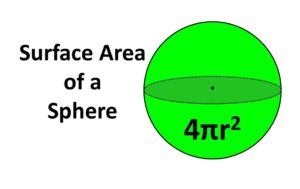

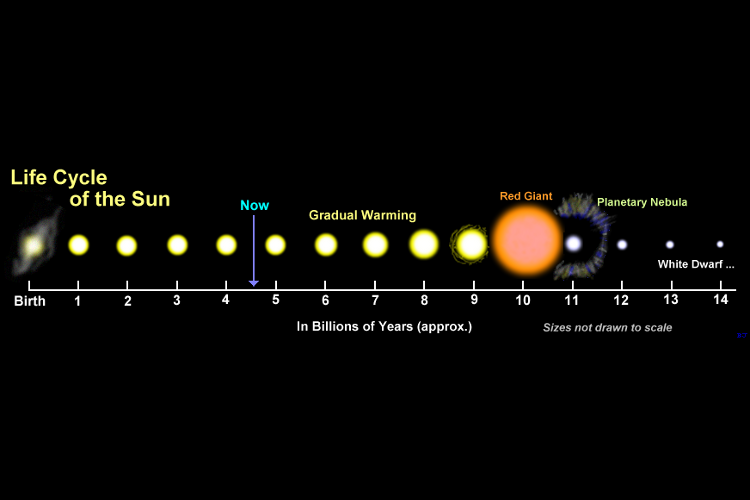
.svg.png%22&N=1200px-Solar_evolution_(English).svg.png)
